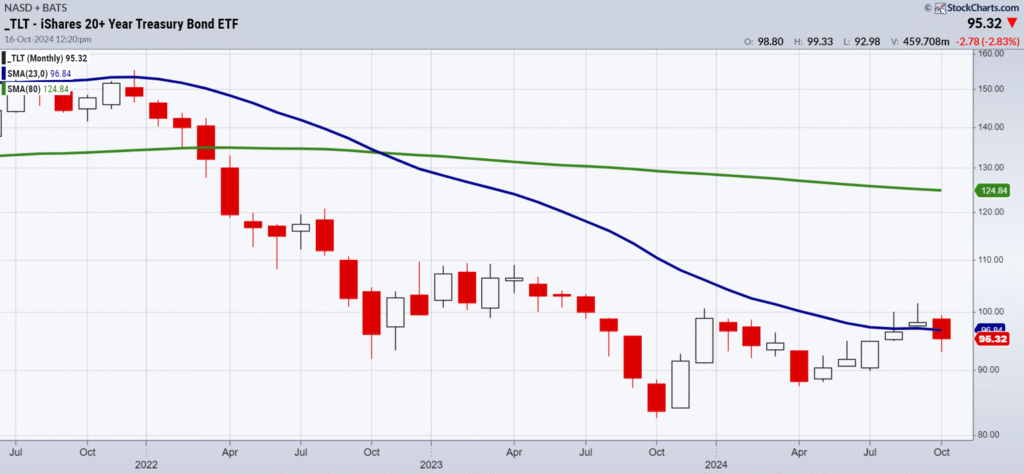In the realm of financial markets, the interplay between long-term bonds, interest rates, and central bank policies is a topic of perennial interest and debate. Recently, this discussion has become more pronounced, morphing into what could be likened to a “political football”. Much of this heightened attention can be attributed to the Federal Reserve’s stance on rates, punctuated by remarks from former U.S. President Donald Trump concerning interest rates and Jerome Powell, the Chair of the Federal Reserve.
In the ensuing discourse, the focus has notably shifted towards long-term treasury bonds, epitomized by the trade in iShares 20+ Year Treasury Bond ETF. Over the past few days, there has been a notable reversal after a period characterized by ascending yields and a significant decline in values for these long bonds.
Why does this merit attention? The trading behavior and performance of these Treasury Long-Term Bonds (TLTs) serve as barometers for gauging market sentiment, essentially indicating whether investors are leaning towards risk-on or risk-off strategies. A common analytical approach involves juxtaposing the performance of these long bonds against both high yield, high debt bonds, and benchmark indices such as the S&P 500.
Delving deeper into this analysis, the monthly performance charts of TLTs offer a broader perspective, particularly through the lens of the 23-month and 80-month moving averages. These averages are not arbitrary; they are reflective of typical business cycles, spanning approximately 2 years and 5-6 years, respectively. Currently, a fascinating trend is observed with the long bonds attempting to ascend beyond the 23-month moving average as we approach the end of October, an occurrence with potentially significant implications for both the bonds and equities markets.
This movement could be interpreted in several ways. On one hand, it might signal an anticipation of lowered interest rates, both domestically and globally, which bodes well for sectors awaiting such fiscal relief – including technology, small caps, and industrials. Conversely, it could portend a resurgence of market trepidation, an aspect that warrants vigilant monitoring.
A critical resistance point for TLTs, identified at the $100 mark, remains a key figure to surpass. The recent bottoming pattern indicated a potential reversal, yet it’s essential to note that TLTs continue to underperform when compared directly to the S&P 500, as per the insights drawn from their daily chart. Despite a bounce-back from the recent troughs, this rally might represent more of a transient fluctuation rather than a fundamental shift in market dynamics.
This observation has broader implications for what is termed as the ‘Economic Modern Family’, a collective comprising various ETFs indicative of distinct sectors within the economy. These include the S&P 500 (SPY), Russell 2000 (IWM), Dow Jones Industrial (DIA), and more specialized ETFs representing regional banks (KRE), semiconductors (SMH), transportation (IYT), biotechnology (IBB), and retail (XRT), each possessing its pivotal levels of support and resistance that serve as indicators for short-term bullish or bearish trends.
For instance, the Russell 2000 ETF recently cleared a notable threshold, posing the question of whether it could surpass further milestones. Meanwhile, the Nasdaq continues to navigate pivotal support and resistance levels, indicative of the ongoing tug-of-war between bearish and bullish sentiments.
A mention of the iShares iBoxx High Yield Corporate Bond ETF (HYG) serves as a reminder of the interrelation between high-yield corporate bonds and broader market trends, with specific support levels serving as a litmus test for market resilience.
In summary, the dynamics between long-term bonds, interest rates, and market sentiment forms a complex narrative that underscores the interconnectedness of fiscal policies, central bank interventions, and investor strategies within financial markets. As we navigate through these intricate webs, the pursuit of a deep understanding of these relationships continues to be of paramount importance for investors aiming to make informed decisions in an ever-evolving economic landscape.



